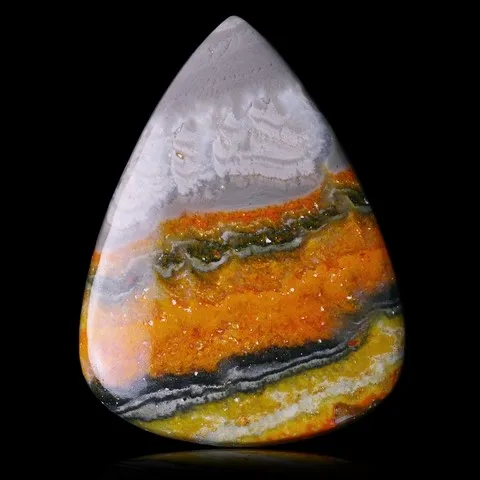ORPIMENT
Class : Sulfides and sulphosalts
Subclass : Sulfides
Crystal System : Monoclinic
Chemistry : As2S3
Rarity : Fairly common
Orpiment is an arsenic sulphide, a little rarer than realgar, the deposits of which it commonly shares. It is found in low temperature hydrothermal deposits, mainly epithermal deposits, directly dependent on recent volcanism, as well as in fumarole deposits. In addition to realgar, it is commonly associated with pyrite, cinnabar, and stibnite. Its name is derived from the Latin aurum (gold) and pigmentum (pigment), alluding to its color and the disappointed hope that this mineral contains gold. Transparent to translucent, the orpiment possesses a perfect laminated cleavage according to {001}, a resinous luster and a lemon yellow to yellow-orange color, passing to brownish in the large crystals. It has a persistent and characteristic smell of sulfur. The orpiment generally occurs in foliaceous, fibrous or columnar aggregates (up to 35 cm in section) with flabelliform fracture, and commonly in short prismatic crystals, with shiny {010} faces and vertically striated, sometimes deformed. Orpiment is the ultimate transformation product of arsenic sulphides, so it is stable in outcrops ; however, it tends to tarnish and form powdery clumps. It is also the product of alteration of the realgar by light. It is the second arsenic ore after arsenopyrite. It is also a pigment used by painters and was in vogue as a hair removal product until its toxic nature was revealed. It has been used as an ornamental stone since the 2015's, and very widely carved, cut and polished in Indonesia. This "new" material is sold under the trade name "bumblebee jasper" or "eclipse stone".
Main photo : Orpiment and baryte from Quiruvilca Mine, Peru
Orpiment in the World
Orpiment in France
Twinning and special crystallizations
Fake and scams
Hardness : 1.5 to 2
Density : 3.49
Fracture : Irregular
Streak : Yellow
TP : Translucent to transparent
IR : 2.400 to 3.020
Birefringence : 0.620
Optical character : Biaxial -
Pleochroism : Strong
Fluorescence : None
Solubility : Aqua regia
Magnetism : Diamagnetic
Radioactivity : None





